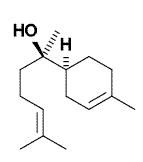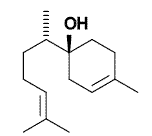KNOW WHICH INGREDIENTS CAN HELP PROTECT YOUR SKIN [AND WHICH DO MORE HARM THAN GOOD]
NOW THAT WINTER'S HARSH WEATHER IS FINALLY beginning to wane, it's time to assess your skin's moisturizing needs. The harsh and arid climates produced by indoor heating and outdoor wind may have diminished somewhat, but their effects on your skin likely have not. Flaky legs, hands that resemble tiny road maps, and cracked lips serve as reminders of the past dry months. Just as you may change your wardrobe to accommodate the warmer weather, it's time to "dress up" your skin for spring!
Human skin is an incredible feat of nature. Not only does it protect our organs from the elements and help to regulate body temperature, but it's our first barrier from infection, as well. Actually, the skin is considered an organ in itself -- the body's largest, in fact. And, since moisturizers and creams account for nearly 23 percent of the cosmetics market, it's apparent that we care a good deal how our largest organ looks to others. But, before you slather on that oil-laden cream or lotion, it's important to understand how the skin functions and to dispel a few myths about moisturizing products to boot.
Skin facts
There are two types of human skin -- glabrous (without hair) and hair-bearing. The former is found on the palms and soles and has a thick outer layer that contains dermatoglyphics, a fancy term for fingerprints. But, all skin is made up of an intricate matrix of nerves, blood vessels, sensory organs, and sweat and oil glands that make it the most complex organ in the human body. The average adult possesses 21 square feet of skin containing an estimated 300 million cells and weighing between seven and nine pounds. A single square inch of skin contains approximately 100 sweat glands, 3.2 feet of blood vessels, 10 hairs and 1$ oil glands. The outermost layer, the epidermis, is constantly being renewed by newly emerging cells that push old cells off from the surface. This cycle of natural exfoliation takes anywhere from 52 to 75 days to complete and continues throughout our lives.
The skin contains several layers, but for our purposes we need only be concerned with the dermis and epidermis, the two uppermost layers where cell growth and moisture retention takes place. Between these two layers reside basil and spiny cells, the cells responsible for new cell generation and the skin's elasticity, respectively. Remarkable as these processes may be, they do tend to work against us a bit as we age and as a result of chronic exposure to the environment.
Moisturizing hazards
The environment isn't the only thing to blame for poorly functioning skin. It could be the very product touted as being able to restore that youthful glow to your skin that's doing the damage. For instance, "sensitive" skin may not be overly sensitive at all, but the result of too many chemicals being applied from seemingly innocuous moisturizers and creams. In addition, many moisturizers are over-loaded with heavy oils that not only attract and trap dirt and toxins, but that literally suffocate the skin as well. Leave the heavy oils to dressing your salads, not your skin.
Another commonly held myth concerning moisturizers is that the more expensive the product, the more effective it must be. The reality is that, for the most part, all moisturizers are created equal. That is, the cost of the formulation from the least to the most expensive brand is generally the same, but packaging costs are likely to be what's robbing your wallet of extra cash.
Superior quality, however, is evidenced in the eye of the beholder, in terms of label reading. You may have a good idea of what kinds of ingredients are good for your skin, but do you know what to avoid?
Check to see if any of the moisturizing creams you currently use contain one or more of the following ingredients that can hurt your skin:
Propylene Glycol: This is one of the most common ingredients found in all types of moisturizers. It's also only one molecule removed from an ingredient that is in industrial antifreeze and brake and hydraulic fluid. It can cause kidney and liver damage. The main reason it appears in many personal care products is because it makes a solution feel "silky smooth" and is quite inexpensive.
Sodium Lauryl Sulfate (SLS): SLS is used as an engine degreaser and is readily absorbed in the blood stream. Mixed with other ingredients, it can form dangerous nitrates that damage the liver and kidneys. Studies suggest that SLS can be retained by tissue of the eyes, heart and brain.
Sodium Laureth Sulfate (SLES): Is the alcohol form of SLS and is capable of forming harmful nitrates. SLS and SLES are the only surfactant chemicals known to penetrate the bloodstream. Both SLS and SLES have been associated with certain cancers, hair and vision loss and allergic reactions.
Also, stay on the lookout for these harmful substances and avoid them as best you can:
Lauramide DEA: This is a synthetic substance used as a thickener and to encourage lather. It has also been found to cause allergic reactions and the raw materials used to manufacture it may contain harmful nitrosamines (carcinogenic compounds), which have been shown to cause cancer in laboratory animals and to penetrate the skin.
Phenol Carbolic Acid: A coal-tar derivative that can cause convulsions, paralysis, coma and even death due to respiratory failure if ingested in small amounts. But, you don't have to drink it -- it's also readily absorbed through the skin.
Kaolin: This is a fine powder using in manufacturing porcelain. It won't make your skin look like fine china though; it will weaken and smother it instead. In fact, kaolin is used to put out forest fires.
Lanolin: This ingredient is listed here for two reasons. First, it's derived from the wool of sheep and may harbor pesticides. Secondly, it can also cause allergic reactions in some people.
Mineral oil: This is a petroleum product (non-renewable) and used as an industrial grease component. Mineral oil stays on the surface of the skin, trapping dirt, excess oil and even excess moisture to create a water logging effect. It also prevents the skin from receiving oxygen and releasing carbon dioxide.
One more ingredient worth mentioning here is collagen. While collagen is indeed good for your skin and naturally occurs there, the source of the collagen in your moisturizers is just as important to consider as the way it's formulated. Some manufacturers use animal-derived forms of collagen, such as ground-up chicken feet or the scrapings of bird or cow skins. Others use a synthesized form made from plant proteins. If in doubt as to the source of collagen used in your moisturizing products, call the manufacturer.
Moisturizer mojo
Although moisturizers can't work magic, the all-natural ones can truly help our skin escape its winter mantle and achieve what can only be called -- true radiance.
RELATED ARTICLE: the right stuff
Ready to hear what kinds of natural ingredients will help to nourish your skin and improve its appearance without risking long-term health effects in the bargain? There are scores of them. Here is a sampling of what you want to see on the label of your moisturizing lotions and creams:
Sweet Almond Oil: A natural emollient found in some moisturizers and tanning products, sweet almond oil is easily absorbed and can help to retain the natural balance of skin oils.
Panthenol: A component of yeast, wheat germ and vitamin B-5 that nourishes cells, retains moisture and reduces fine lines and wrinkles.
Yeast Mucoprotein: Derived from natural grains, it produces enzymes that convert sugar into alcohol and carbon dioxide, serving to oxygenate skin.
Wheat Germ Extract (and glycerides): A protein source of vitamin E, thiamine and B6 that helps to oxygenate skin. Wheat germ oil has similar properties.
Shea Butter: Made from the fruit of the karite tree, shea butter increases cell renewal and capillary circulation to promote healing, especially stretch marks. It also effectively helps with signs of aging.
Fractionated Hyaluronic Acid: A low-molecular weight compound that retains moisture and improves skin elasticity. Occurring naturally in human skin, hyaluronic acid absorbs up to 1,000 times its weight in water.
Lavender Oil: Balances skin and has antiseptic qualities. It also stimulates cell renewal and can reduce scarring. (Note: Some people may experience contact dermatitis.)
Chamomile: A good source of levomenol, a natural moisturizer that improves texture and elasticity. It also reduces inflammation and itching.
Green Tea: Contains catechins with antioxidant activity and protects against UV damage. To enjoy the tea's healing benefits, combine loose green tea and oatmeal in a cheesecloth bag and toss into a warm bath.
Rose Hip Oil: Derived from a wild mountain rose grown in Chile, this oil replenishes lipids and reduces fine lines. It is an essential fatty acid compound that is very high in vitamin E, C and gamma-linoleic acid.
Horsetail extract: A very rich source of silica and a basic component of all hair, skin and nails. Horsetail helps to soften skin while working to strengthen capillary walls.
RELATED ARTICLE: SOME PRODUCTS TO LOOK FOR:
Camocare Ultimate Body Therapy for Extra Dry Skin
Camocare Gold Facial Therapy-Combines the benefits of chamomile and an alpha lipotene antioxidant.
Jason Natural Cosmetics Suma Moist Rich Creme Concentrate - Contains live yeast cell extract.
Earth Therapeutics Green Tea Herbal Lotion
ABRA Adaptagen Green Tea Phytoserum
Rachel Perry Lecithin-Aloe Moisture Retention Cream
Vance, Judi. Beauty to Die For: The Cosmetic Consequence. New York, NY; Excel Press, 2000.
Winter, Ruth. A Consumers Dictionary of Cosmetic Ingredients. New York, NY; Crown, 1999.
COPYRIGHT 2001 PRIMEDIA Intertec, a PRIMEDIA Company. All Rights Reserved.
COPYRIGHT 2001 Gale Group




